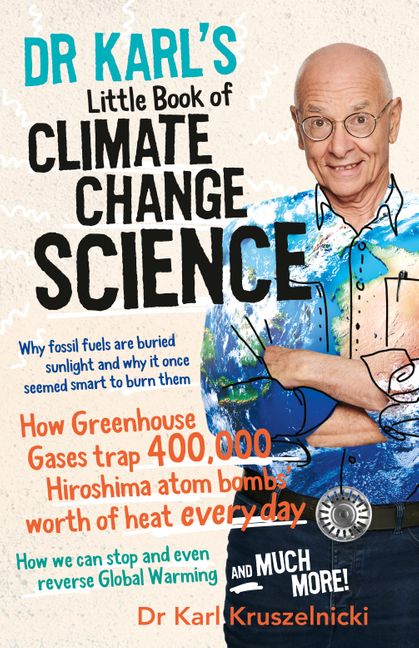Report on the Impact of Climate Change on Bee Populations and its Implications for Sustainable Development Goals
This report details the effects of rising global temperatures on bee populations, both managed and wild. It analyzes the physiological and behavioral impacts of heat stress on bees and connects these challenges to the achievement of several United Nations Sustainable Development Goals (SDGs), particularly those concerning food security, climate action, and biodiversity.
1.0 Introduction: The Overarching Threat to Pollinators
Increasing global temperatures, a primary indicator of climate change, are exerting significant pressure on bee populations. This environmental stressor exacerbates existing threats, including habitat loss, pesticide exposure, and disease, leading to a notable decline in pollinators. This decline has profound implications for global ecosystems and human well-being, directly challenging the progress of key SDGs.
2.0 Physiological and Behavioral Impacts of Heat Stress
Scientific studies indicate that bees are experiencing direct consequences from rising temperatures, forcing them to adopt coping mechanisms that compromise their essential functions.
2.1 Adaptive Behaviors and Reduced Efficacy
To survive in hotter conditions, bees exhibit several adaptive behaviors:
- They alter their flight patterns, using fewer but more powerful wingbeats to avoid overheating.
- They retreat to cooler environments, such as shade or their nests, during peak heat.
While these adaptations are crucial for survival, they result in a significant reduction in productive activities. This includes a decrease in nectar collection, pollination, and mating, which are vital for both the colony’s survival and its ecological role.
2.2 Compounding Stress Factors
The impact of heat is amplified by other environmental pressures. According to pollinator health experts, a bee’s resilience to heat is diminished when its system is already compromised. Key contributing factors include:
- Poor nutrition due to lack of diverse forage.
- Intoxication from pesticides.
- Pre-existing diseases and parasitic infestations, such as mites.
The annual U.S. Beekeeping Survey highlighted this vulnerability, with preliminary results showing a record loss of nearly 56% of managed colonies, underscoring the severity of these combined threats.
3.0 Implications for Sustainable Development Goals (SDGs)
The decline of bee populations is not merely an environmental issue; it is a critical development challenge that directly threatens the achievement of multiple SDGs.
3.1 SDG 2: Zero Hunger
The decline in pollinators poses a direct threat to global food security. Managed honeybee colonies are essential for the pollination of numerous agricultural crops, including almonds, apples, and blueberries. A reduction in bee populations leads to insufficient pollination, which can result in lower crop yields and jeopardize food supply chains. The fragility of this system, where high-value crops depend on a dwindling pollinator force, puts food production systems at significant risk.
3.2 SDG 13: Climate Action
The challenges faced by bees serve as a clear and urgent indicator of the tangible impacts of climate change. The observed heat stress, altered behaviors, and subsequent population decline are direct consequences of a warming planet. Addressing the root cause through robust climate action is essential for mitigating these effects and preserving the ecological services that bees provide.
3.3 SDG 15: Life on Land
Bees are a cornerstone of terrestrial ecosystems, and their decline represents a significant loss of biodiversity. This report notes that agricultural landscapes dominated by monocultures (e.g., corn and soybeans) limit the floral diversity bees require. Furthermore, climate change is causing erratic blooming patterns in native flora, disrupting natural food sources for bees. Protecting pollinators is an integral component of preserving biodiversity and maintaining the health of terrestrial ecosystems as mandated by SDG 15.
3.4 SDG 8: Decent Work and Economic Growth
The apiculture industry and the broader agricultural sector face significant economic threats. Beekeepers like Isaac Barnes of Honeyrun Farm experience direct economic losses from hive deaths and reduced honey production. The inability to use necessary treatments for pests like mites during hot weather creates a ripple effect, impacting the health of hives sent to pollinate commercial crops and thereby affecting the economic viability of both beekeepers and farmers.
4.0 Research and Policy Considerations
Effective mitigation requires a foundation of robust scientific research and supportive public policy, both of which face current challenges.
4.1 Gaps in Scientific Understanding
The study of how climate change and heat stress contribute to pollinator decline is a relatively new field of focus. There is a recognized need for more comprehensive data to fully understand the scale of the problem and develop effective management strategies.
4.2 Risks to Research Funding
Progress in this critical area is threatened by potential cuts to research funding, such as the proposed elimination of the USGS Bee Lab’s research program. Such reductions would severely hamper the ability of scientists to monitor pollinator populations, study the causes of their decline, and devise solutions. The lack of research could lead to severe economic consequences, including increased scarcity and price volatility for pollinator-dependent products like fruits, vegetables, coffee, and chocolate.
5.0 Conclusion
The evidence indicates that climate change, in conjunction with other environmental stressors, is creating a critical threat to global bee populations. This decline directly undermines progress toward achieving Sustainable Development Goals 2 (Zero Hunger), 13 (Climate Action), 15 (Life on Land), and 8 (Decent Work and Economic Growth). Urgent and coordinated action, including sustained funding for scientific research and decisive climate policies, is imperative to protect these vital pollinators and the essential systems they support.
1. Which SDGs are addressed or connected to the issues highlighted in the article?
SDG 2: Zero Hunger
- The article connects the health and population of bees directly to food production. It states that “Fewer pollinators can lead to less pollination and potentially lower yields” for crops like almonds, apples, cherries, and blueberries. This highlights the link between pollinator decline and the goal of ensuring sustainable food production systems. The potential for food prices to “jump or become scarce” further emphasizes the connection to food security.
SDG 13: Climate Action
- The core issue discussed is the impact of rising global temperatures on bees. The article explicitly states, “As global temperatures rise under climate change, scientists are trying to better understand the effects on managed and wild bees.” It details how heat stress affects bee behavior, health, and ability to pollinate, directly linking climate change to the challenges faced by these crucial species.
SDG 15: Life on Land
- This goal is central to the article, which focuses on the “global decline of bees and other pollinators.” This is a direct reference to the loss of biodiversity (Target 15.5). The article also mentions other threats contributing to this decline, including “habitat loss, increased use of pesticides, diseases and lack of forage,” which are key concerns for protecting terrestrial ecosystems. The lack of plant diversity in areas “dominated by corn and soybean fields” is cited as a problem, pointing to the degradation of natural habitats.
SDG 17: Partnerships for the Goals
- The article touches upon the importance of science, technology, and funding for addressing the issue. It mentions the potential elimination of funding for the “USGS Bee Lab” and other research grants, which would halt critical research. It also highlights the role of international cooperation, noting that “even if such research is defunded in the U.S., such research will continue in Europe and China.” The mention of a U.S. Senator fighting for federal funding and private foundations supporting climate coverage also points to the multi-stakeholder partnerships needed to achieve sustainable development.
2. What specific targets under those SDGs can be identified based on the article’s content?
-
SDG 2: Zero Hunger
- Target 2.4: “By 2030, ensure sustainable food production systems and implement resilient agricultural practices that increase productivity and production, that help maintain ecosystems, that strengthen capacity for adaptation to climate change…” The article discusses the fragility of the agricultural system dependent on bees (“It’s a very fragile system if you think about it”) and how climate change impacts pollination, which is essential for resilient and productive agriculture.
-
SDG 13: Climate Action
- Target 13.1: “Strengthen resilience and adaptive capacity to climate-related hazards and natural disasters in all countries.” The article describes how bees are trying to adapt to heat by changing their behavior, but this comes at a cost to their primary functions. It also highlights the vulnerability of beekeepers and agriculture to the impacts of heatwaves.
- Target 13.3: “Improve education, awareness-raising and human and institutional capacity on climate change mitigation, adaptation, impact reduction and early warning.” The scientific research discussed in the article is a key component of building institutional capacity to understand and address the impacts of climate change on ecosystems and agriculture. The article itself serves to raise public awareness.
-
SDG 15: Life on Land
- Target 15.5: “Take urgent and significant action to reduce the degradation of natural habitats, halt the loss of biodiversity and, by 2020, protect and prevent the extinction of threatened species.” The article’s central theme is the “global decline of bees and other pollinators” and the various factors causing it, directly aligning with this target to halt biodiversity loss.
- Target 15.9: “By 2020, integrate ecosystem and biodiversity values into national and local planning, development processes, poverty reduction strategies and accounts.” The article underscores the economic value of pollinators, noting that without them, “super high-value crops… won’t get enough bees for pollination,” making a case for integrating their protection into economic and agricultural planning.
-
SDG 17: Partnerships for the Goals
- Target 17.6: “Enhance North-South, South-South and triangular regional and international cooperation on and access to science, technology and innovation…” The article implies the importance of this by mentioning that if U.S. research is defunded, it will hopefully “continue in Europe and China,” highlighting the global nature of scientific research on this issue.
3. Are there any indicators mentioned or implied in the article that can be used to measure progress towards the identified targets?
-
Indicators for SDG 2 and SDG 15
- Percentage of managed bee colonies lost: The article provides a direct, quantifiable indicator from the U.S. Beekeeping Survey, which found that “beekeepers lost almost 56% of their managed colonies, the highest loss since the survey started in 2010.”
- Agricultural yields: An implied indicator is the potential for “lower yields” in crops like almonds, apples, and cherries due to insufficient pollination.
- Food prices: The article implies that an increase in the price of “fruits, vegetables, nuts, coffee and chocolate” could be an indicator of pollinator decline’s impact on food systems.
- Plant diversity: The article mentions a “rare bit of plant diversity in an area dominated by corn and soybean fields,” suggesting that the ratio of diverse forage to monoculture crops could be a qualitative indicator of habitat health for pollinators.
-
Indicators for SDG 13
- Rise in global temperatures: The article’s premise is based on this primary indicator of climate change.
- Changes in species behavior: The observation that bees use “fewer but harder wingbeats to keep their body temperature below dangerous levels” on hot days is a specific, measurable indicator of species’ response to heat stress.
-
Indicators for SDG 17
- Funding for scientific research: The article directly mentions the proposed elimination of the “budget that would zero out funding for critical research aimed at saving important pollinators,” making research funding levels a clear indicator of government commitment and partnership in science.
4. Table of SDGs, Targets, and Indicators
| SDGs | Targets | Indicators Identified in the Article |
|---|---|---|
| SDG 2: Zero Hunger | 2.4: Ensure sustainable food production systems and resilient agricultural practices. |
|
| SDG 13: Climate Action |
13.1: Strengthen resilience and adaptive capacity to climate-related hazards.
13.3: Improve education, awareness-raising and human and institutional capacity on climate change. |
|
| SDG 15: Life on Land |
15.5: Halt the loss of biodiversity.
15.9: Integrate ecosystem and biodiversity values into planning. |
|
| SDG 17: Partnerships for the Goals | 17.6: Enhance international cooperation on and access to science, technology and innovation. |
|
Source: abcnews.go.com






